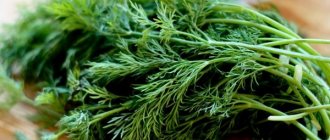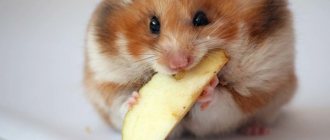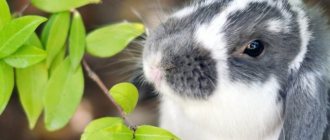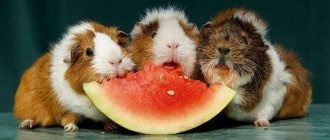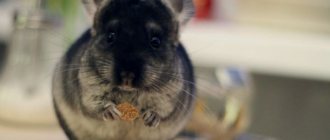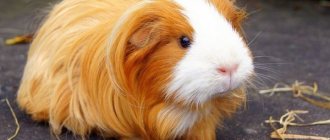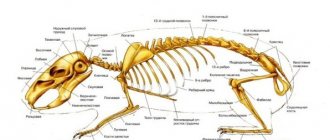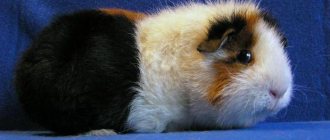The guinea pig is a very interesting pet that needs good care and company. The diet should include food that they consume in the wild. This is the only way to maintain strong immunity and normal functioning. You need to know what guinea pigs eat before purchasing one. Proper nutrition is extremely important and the health and life of the animal will depend on it. For starvation, 1–2 days without food is enough.
Feeding rules
These are herbivores that consume up to 150 g of food per day. They eat mainly hay and vegetables. The daily menu for pets should include:
- 10% dry food;
- 30% greens and succulent feed;
- 60% hay.
The diet of guinea pigs should be varied as much as possible. Eating the same type of food can lead to a deficiency of beneficial vitamins and minerals.
Important! Animals have a weak digestive system. Their stomachs react sharply to chemicals and poor quality food. To avoid health problems, you should feed your guinea pig at home only environmentally friendly products.
Animals often leave food and return after some time to finish eating. Therefore, you need to constantly check that there is no spoiled food in your pet’s bowls.
You need to feed your guinea pig 3 times a day. She should eat green food before lunch and dry food in the evening. The animal’s digestive system is designed in such a way that there must always be food in it. A hunger strike causes the stomach to stop working. And if a pet does not eat for 18-20 hours, it may die.
Pet diet at home
The diet of guinea pigs should be varied, but without daily experiments, which can cause problems in the animal’s digestive system. Standard set of products:
- carrots (pumpkin, zucchini, beets),
- apple (hard pears, raspberries, apricots, peach);
- white or cauliflower;
- high-quality granulated food;
- greens (parsley, dill, clover, dandelion leaves, wood lice grass);
- unlimited quantities of hay.
In the summer season, carrot and beet tops, cucumbers from your garden and fresh grass are good complementary foods.
Juicy feeds must be alternated. Food for guinea pigs should consist of 5-6 types of vegetables and fruits.
Vegetables
Vegetables that you can offer your pig and choose the types that she tolerates well:
- carrot;
- beet;
- zucchini;
- pumpkin;
- cauliflower;
- White cabbage;
- Bulgarian pepper;
- swede;
- turnip;
- green pea pods;
- cucumbers;
- tomatoes.
It is recommended to purchase home-grown vegetables grown without pesticides. They can be dried for the winter or frozen.
As for cabbage, the opinions of breeders are divided. Sometimes it is recommended to completely exclude this product from the pig’s diet so as not to provoke bloating. However, cabbage in very limited quantities is extremely useful for the animal, as it contains many substances that prevent obesity.
Your pet should be introduced to cabbage gradually and not exceed the dose, after which he may become bloated. It has been noticed that a rodent that regularly eats white cabbage is more energetic and healthy.
Fruits and berries
Fruits and berries of your pet's choice:
- apples;
- pears;
- peaches;
- apricots;
- plums;
- cherry;
- cherries;
- citrus;
- blackberry;
- raspberries;
- strawberry.
Each type of fruit and berry is offered to the pigs one at a time and their health is monitored. Some berries can cause an allergic reaction.
Fresh greens, grass and hay
You can safely give a wide variety of greens, provided that they are clean, fresh, and not treated with chemicals:
- dill/parsley;
- spinach, lettuce, celery;
- greens of sprouted wheat and oats;
- leaves of strawberries, raspberries, currants, gooseberries;
- carrot and beet tops;
- meadow grass.
Everything picked in the forest and in the countryside must be thoroughly washed. If the pig is kept in a house with a garden plot, it makes sense to designate a garden bed where you can plant herbs specifically for the rodent. At home it is easy to grow clover and alfalfa, parsley, dill, lettuce, and garden quinoa.
You cannot collect grass for hay along the trails. As weeds in gardens you can find chickweed, acorn grass, wheatgrass, purslane, plantain and even nettle. These herbs can be given to the pig during the season, drying under a canopy. Wheatgrass produces high-quality hay for the winter. If you prepare hay in sufficient quantities, feeding your pet in winter will not be a problem. Dry the grass in such a way that it is not exposed to sunlight for at least one and a half months. The best option at home is an electric dryer, which will help you easily and quickly prepare not only herbs, but also organic fruits, vegetables, and berries for feeding the animal in the winter. A rodent always needs hay, so you need to take care of preparing it in advance.
The best hay is made from legumes, nettles, alfalfa and clover. By processing hay and twig food, the pig keeps its teeth in good working order.
Hay
Due to the special structure of the gastrointestinal tract, the nutrition of guinea pigs must be organized so that they can eat hay every day. This is their favorite food, which stimulates the digestive system and prevents the occurrence of intestinal diseases. You can purchase it at a pet store or prepare it yourself.
When choosing purchased hay, it is important to pay attention to its aroma. It should smell like grass, not damp.
You need to carefully ensure that the hay that guinea pigs eat does not contain large, coarse twigs, dust or other contaminants.
If you wish, you can feed the animals with your own prepared hay. It is recommended to collect raw materials for it away from swamps, highways and industrial enterprises. You need to dry the grass for the winter for at least 1.5-2 months, and it should not turn black or turn black.
On a note. It is especially useful to feed the rodent legume-cereal and bean hay. It contains all the vitamins a guinea pig needs.
Fruits and berries
Bananas
Can guinea pigs have bananas? A banana rich in potassium will benefit your guinea pig, but you should not give more than 1 piece per day.
The peel of the vegetable must be removed, as it is treated with substances hazardous to health (wax, chemicals, ethylene and pesticides). For safety, it is better to remove soft fibers from the fruit.
I'm eating a banana! Om-Nom-nom. I won't give it to you!
Can guinea pigs eat a pear?
Pears can be given with the peel, but without the seeds. The fruit is washed well and cut into pieces; the pig should be offered water along with it. Excessive consumption of pears due to their high sugar content can cause diarrhea.
Can guinea pigs eat kiwi?
Kiwi is a very healthy fruit for animals. It contains a large amount of ascorbic and folic acids. It is also rich in vitamins E, iron, calcium, magnesium and phosphorus.
Kiwi is given without skin in the form of small pieces. For your pet, you need to choose harder fruits. It is better to control the amount you eat. An increase in the dose of kiwi is permissible in autumn and winter, as well as when feeding females during pregnancy and lactation.
Can guinea pigs have oranges and other citrus fruits?
Can be used occasionally. But it is better for guinea pigs to get vitamin C from other foods, avoiding citrus fruits. Possible complications:
- oversaturation with vitamins;
- skin irritation;
- oxidation of urine.
Can guinea pigs eat apples?
Apples can be raw or dried. They have a balanced ratio of sugar and fructose (18:80%). It allows the pig to be active.
The fruit must be peeled and cut into slices. It is better not to give more than 3 pieces at a time.
Can guinea pigs eat strawberries, grapes and other berries?
Strawberries contain a sufficient amount of vitamin C to pay attention to the berry when choosing a treat for a rodent. You can also give strawberry leaves to animals.
- The pig might like grapes. You can offer the animal seedless grapes.
- Eating currants once a week will also not harm your pet.
- If you do not abuse it, you can offer the pig berries and raspberry leaves, berries, leaves and branches of blueberries, blackberries and sea buckthorn, and rose hips without seeds.
- Cranberries are given for medicinal purposes. It has an anti-inflammatory effect on the mucous membranes of the mouth, stomach, and bladder.
Green feed
In addition to hay, the animal loves to eat green food. They minimize the risk of developing diseases of the digestive system and saturate the body with useful substances. Guinea pigs can eat celery, mint, spinach, basil, dill, parsley and arugula.
They eat tansy, yarrow, chamomile, plantain leaves, clover, young sedge and dandelions with appetite. It is also recommended to introduce sprouted grains, cilantro, carrot tops, turnips and beets into the guinea pig's diet.
Not all greens are good for feeding your pets. They should not eat a lot of lettuce leaves. Some of them, in particular watercress, have a diuretic effect and irritate the respiratory tract.
Most wild plants are poisonous and unsuitable for animal feeding. Therefore, they must be collected extremely carefully. For safety reasons, guinea pigs should not be fed unknown plants. For the same reason, animals are prohibited from eating greens purchased at the market.
If it has been treated with insecticides, it can cause severe poisoning and even death of the pet.
Grain feed
The animals' menu should include a food mixture, an obligatory component of which is oats. It may also contain crops such as corn, wheat and peas.
Important! Animals that eat a lot of carbohydrates become obese. Therefore, grains can be given to guinea pigs in strictly limited quantities and only if they do not lack exercise.
Seeds, nuts and other foods
Active pigs need high-calorie foods. In this case, sunflower seeds, flax and sesame seeds, as well as nuts, are indispensable. If the animal gains weight too quickly, these foods are excluded from the diet.
- You can give rodents wheat bran, green peas, and sometimes cereals.
- It is very useful to give your pet branches of fruit trees to wear down teeth and replenish mineral reserves.
- Dried fruits are suitable as a “holiday” treat. In large quantities they are dangerous for the animal.
Additional sources of vitamins and minerals
A natural source of vitamins for guinea pigs is grass. But since an animal living at home eats store-bought foods, additional additives are introduced into its diet:
- The most important of all vitamins for a guinea pig is vitamin C. The animal’s body cannot synthesize it on its own, so it is necessary to give 5-25 mg of ascorbic acid per day.
- Vitamins B and K are no less important for guinea pigs. It is not necessary to buy complexes with these substances. Her body does not absorb them immediately, but upon repeated passage through the intestinal tract. That's why she eats her feces.
- In addition to vitamins, a guinea pig needs salt. The average daily amount of this component is about 5 g.
Vegetable menu
The main task of vitamin C in the rodent body is to control the functioning of connective and bone tissues. Animals have to look for it from external sources, since the animal body is not able to produce it in such quantities.
Pigs' favorites on the menu most often include apples, carrots and cucumbers. Vitamin C can enter the animal's body through raw food of plant origin. It is important to give them to your pet at least 1 teaspoon per day. Veterinarians also list the following as approved products:
- Zucchini is allowed due to its high content of minerals and pectins, which normalize the functioning of intestinal permeability.
- Carrots have a positive effect on the condition of the animal’s coat and skin, as well as visual and auditory function. You can give not only the fruit itself, but also well-washed tops. Due to the content of Vitamin A, urine may turn orange.
- Bell pepper can be given to animals only during the season, due to the fact that winter varieties are oversaturated with nitrates. Only sweet varieties are allowed to serve as food.
- Pumpkin is also given to the animal almost completely. And zinc contained in the seeds is a strong preventative against helminthiases.
- Cucumbers themselves are low in calories, safe and have the ability to help digest heavy fats.
- Fresh peas are also acceptable, but in small quantities. Despite the disapproval of veterinarians. Some food manufacturers add the essence of the fruit to their mixtures, despite the fact that they can cause a negative side reaction in the animal.
- Cabbage is also allowed, but subject to proper supervision. While it causes gas in some people, excessive use can be dangerous for pigs. It is worth introducing it into the diet gradually, observing the reaction of your friend.
- Rutabaga facilitates bowel movements and helps avoid constipation. Best suited for your pet's winter diet.
- Jerusalem artichoke can be given as a treat, strictly limiting its total amount in the animal’s diet. The root vegetable itself is the most dangerous; other parts of the plant can be given constantly.
The most undesirable products include:
- Tomatoes are especially considered dangerous when green. They contain solanine, in addition, the use of tops is also not recommended. Ripe tomatoes, due to the destruction of poisons, can be included in the diet in small quantities. If you overdo it, the animal may experience intestinal upset and problems with the gastrointestinal tract.
- Potatoes are prohibited due to starch and solanine.
- Melon has a risk of developing diabetes due to the abundance of sugars.
- Radish and radish oils can cause bloating.
- Beetroot has a stable effect and is not particularly recommended for pregnant females. Root vegetables and tops are recommended for healthy individuals in small quantities. After eating beets, the animal’s urine may temporarily acquire a red tint.
- Corn is prohibited for pigs; only tops are allowed. And grains contain a large amount of starch, which can cause obesity.
Prohibited Products
The list of foods that should not be fed to a guinea pig is very extensive:
- cereals;
- eggs;
- bakery and pasta products;
- fish;
- meat;
- sorrel;
- green onions;
- sweets;
- mushrooms;
- smoked meats and pickles.
Regarding whether you can give bread to guinea pigs, you need to remember one rule. Fresh flour products contribute to the development of flatulence. You can feed your pet only brown bread crackers.
Adult rodents are unable to digest lactose. Therefore, guinea pigs cannot have milk. Not only does it not provide any benefit, but it also causes serious health problems. For the same reason, owners should have no doubt whether guinea pigs can eat cheese. This product is rich in animal fats and proteins that are not digestible by rodents.
Guinea pigs should not be fed potatoes. It is rich in starch, which causes obesity. Potatoes also contain solanine, which can weaken the immune system of animals.
Guinea pigs should not be given pine, spruce, willow, rowan and oak twigs, as well as shoots of elm, hornbeam, larch and buckthorn.
What not to feed a guinea pig
There is a list of harmful foods that you should absolutely not feed to your pet guinea pig. They are absolutely useless for their body, and some of them can cause serious health problems.
What not to give to rodents:
- Prohibited vegetables: radish, radish, onion, potato, eggplant, garlic, horseradish.
- Harmful fruits: dates, persimmons, lemon, lime, pomegranates and grapefruits.
- Do not feed your pet sorrel, rhubarb greens, green onions, garlic, as well as lavender, motherwort, celandine, belladonna, serpentine, valerian, wild rosemary, fern, sow thistle and hemp seeds.
- Branches of fir, quince, oak, pine and spruce are prohibited for rodent food.
- Beans and boiled peas should not be given as legume products.
- Meat and dairy products, eggs, sweets and baked goods are prohibited in any form.
It is also unacceptable to give guinea pigs food from your table, low-quality food, spoiled and stale food, indoor greens, canned food, spices, mushrooms and fruit seeds.
Feeding pregnant pigs and newborn piglets
Pregnant and lactating females need a complete and well-balanced menu. Their usual diet is supplemented with rosehip infusion, succulent food, vegetables and fruits. Pregnant females also need vitamins for their guinea piglets.
Although babies are born with teeth, at first they feed on their mother's milk. True, this does not prevent the cubs from eating “adult” food. Therefore, their cage should always have fortified food enriched with proteins.
Guinea pigs are herbivorous ornamental animals that eat mainly hay, vegetables, herbs and fruits. If they are fed correctly, they will greet their owners with joyful squeaks for many years.
